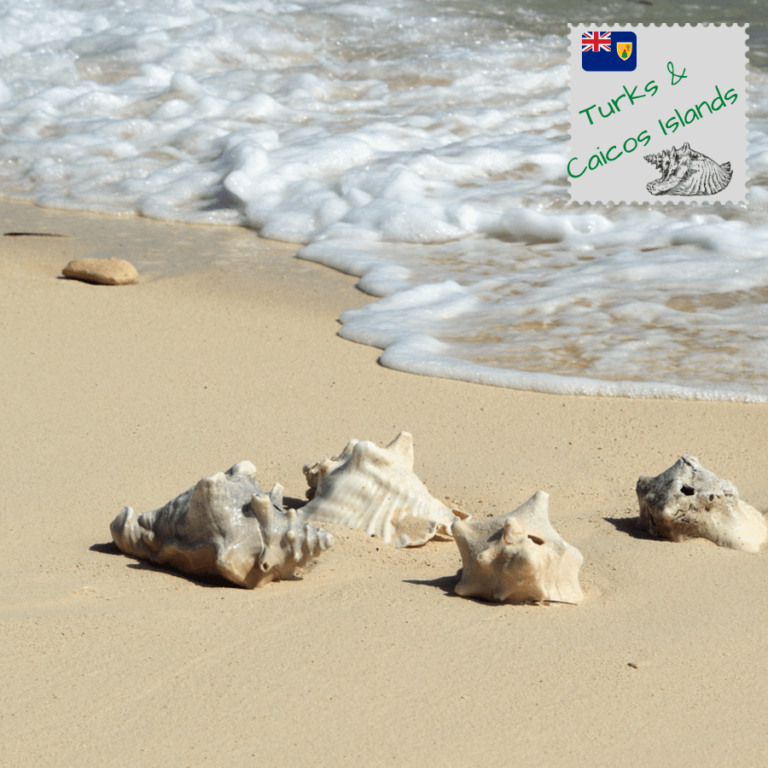
The Turks and Caicos are a British territory of 8 main islands and many small cays south of the Bahamas. Like the Bahamas, they are flat coral islands with beautiful beaches and dramatic undersea scenery. For its long coral reefs, the Professional Association of Diving Instructors (PADI) ranks the islands among the top 5 most popular scuba destinations.


In Turks and Caicos Island the spoken language is English and the written language is English.

The US dollar is the official currency. Turks and Caicos crowns and quarters are issued for small change.

U.S. citizens do not need visas to enter the Turks and Caicos Islands (TCIS) as tourists for short periods, however, U.S. citizens must present a valid passport. Note: U.S. Passport Cards cannot be used to travel by air or private vessel to TCIS.

Because the U.S. operates on a different cell-phone standard than the rest of the world, your typical cell phone from back home won’t work in most Caribbean destinations unless your service provider offers an international plan. Buy an unlocked GSM world phone and use local SIM cards: This is your best option if you travel overseas frequently. Internet services in the Turks and Caicos Islands are easy to access. There are numerous hotels, resorts, and restaurants on Providenciales offering free WiFi. You can easily connect to the internet highway at a number of island restaurants.

Tip 15% in restaurants and for taxi drivers. However, check your bill, as many restaurants add a service charge automatically.

ATM ATMs are found in Providenciales and Grand Turk, but are less common elsewhere; there are none in Salt Cay or Middle Caicos.

You don’t need a power plug adapter on the Turks and Caicos Islands when living in the United States of America. On the Turks and Caicos Islands, the power plugs and sockets are of type A and B. The standard voltage is 120 V and the standard frequency is 60 Hz.

The best time to visit Turks & Caicos is April and May, a sweet spot featuring lower prices and fewer crowds. The weather is pleasant year-round with average highs that hover in the 80s, but these islands do experience a rainy season, and the threat of hurricanes lingers from June to November.
The best way to get around Turks & Caicos is either by car or taxi. There is no public transportation on the islands, and as the attractions, restaurants, and hotels are spread out, walking is not an option. You can rent a car at the Providenciales International Airport (PLS) in Provo. If you choose to island-hop, you’ll need to head to one of the many smaller airports, like Grand Turks’ JAGS McCartney International Airport (GDT). Cheaper ferries are also available by charter to travel between islands.
Taxis are available on all the inhabited islands. Cabs are unmetered and pricing is set (but not cheap): confirm the price before setting out. Prices from the airport to the major resorts on Providenciales are advertised on the wall outside the airport taxi rank; it should be somewhere around US$25–40 for two people. Also in Provo, taxis take the form of minibusses seating up to 12 people, allowing relatively cheap rides for a group.
he islands’ attractions are spread out from one another, so you’ll want to rent a car if you plan on exploring. This is especially vital if you’re staying on one of the larger islands. But be warned: Driving is on the left, road conditions are spotty and gas prices are relatively high. Car selection and prices tend to be the best on Provo. Because Grand Turk is home to the cruise ship port, the usual rental period is eight hours (to cater to daytrippers) and rates are higher than Provo. If you try to rent a car on North Caicos, Middle Caicos, or South Caicos, you’ll likely encounter high prices and minimal selection. You can drive with your U.S. license or an international driving permit for up to one month.
TCI Ferry Service, which has supplanted the regular short-trip planes to North and Middle Caicos, has two routes: Providenciales to North Caicos Several times daily (adult/child return US$55/30, 30 minutes) and Providenciales to South Caicos Three times weekly (adult/child US$110/70, 90 minutes).
While the flat topography of the islands invites cycling, it’s only possible to rent decent bikes on Provo, where cycling is often dangerous and unpleasant, unless you stick to the Grace Bay area (and stay vigilant). Long-distance cycling through deserted North and Middle Caicos on a decent road bike hired in Provo is a very appealing option but takes a little more organization. Aging cruiser bikes can be rented on Grand Turk and Salt Cay.
Air is the quickest and most convenient way to get from Provo to Grand Turk and all islands further than North and Middle Caicos. TCI’s main carrier is the interCaribbean.
Local food in Turks & Caicos is mostly Creole-style and can be found at inexpensive eateries across the islands. Local cuisine employs rare species, bananas, citrus, corn, and ocean salt. Because the territories are situated in the Caribbean zone and belong to the United Kingdom, many elements from these cultures can be found in the local diet. The variety of meat ranges from fish, fish roe, crabs, and lobster, to poultry, pork, and beef. Meat is typically served with local corn, rice, and vegetables and is topped with local sauces and spices.
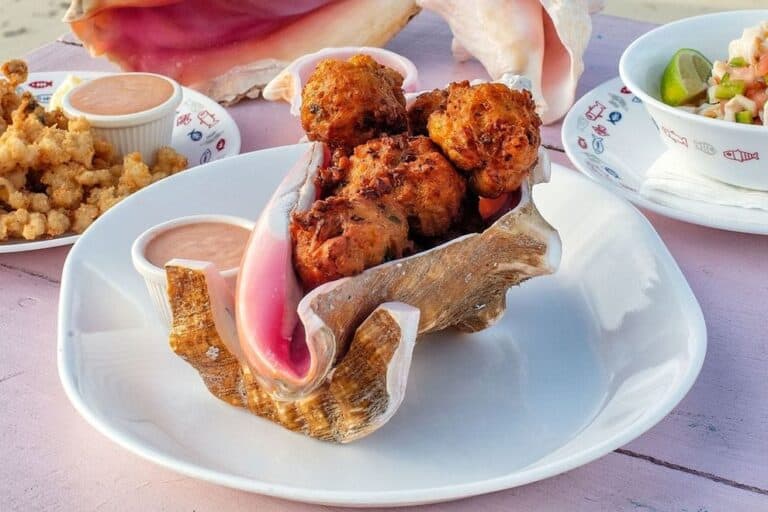
From magnificent villas and secluded hideaways to award-winning luxury hotels in Turks and Caicos and all-inclusive resorts for families. Many hotels and resorts work with dive & tour operators so that hotel and dive packages can be created and tailored to your requirements. Arrangements for golfing, scooter, golf cart, car, or bicycle hire can easily be made for you as well as all water sports and excursions. A select number of hotels and resorts offer in-house fitness rooms and spas for ultimate relaxation and well-being. Mobile services are also available through most properties. Whether you choose an all-inclusive, resort suite condo, private villa, or inn, most hotels offer wonderful dining experiences. We also offer 70+ Turks and Caicos local restaurants throughout the islands. Visitors are encouraged to go and explore the local and international cuisine while in the Turks and Caicos Islands.


The world-famous Grace Bay Beach is located on the northeast coast of the island of Providenciales. This pristine beach is the hallmark of the Turks and Caicos Islands, and the recipient of many designations, awards, and accolades. The entirety of Grace Bay is excellent and breath-taking, with clean turquoise water and soft white sand, and no rocks, seaweed, or pollution.
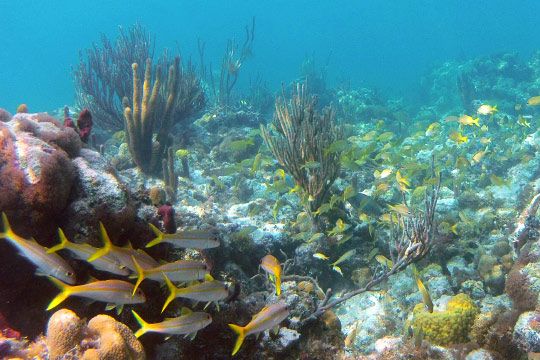
Smith’s Reef is a beautiful snorkeling site off central Providenciales and comprises several distinct reef systems and coral heads. The outer reefs at Smith’s Reef are the best easily-accessible beach snorkeling site on the island.
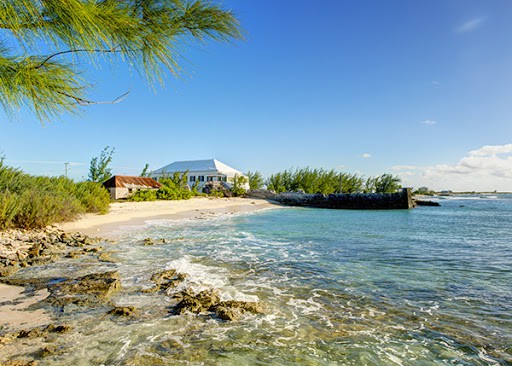
Salt Cay is truly an example of an island time forgot. There’s simply none of the tourism development, all-inclusive resorts, luxury hotels, spas or golf courses that define so many of the other Caribbean destinations. Three small restaurants, specializing in fresh seafood, complete the island’s dining scene.

Countless sailors and shipwreck victims made markings on rocks when they found themselves on Sapodilla Hill on the island of Providenciales in the Northwestern Caicos Islands. Etched into the craggy chalk rocks and boulders strewn across the hill are names, dates, and small designs left by unlucky sailors that found themselves marooned on the island, heading to the hill for a better vantage point from which to spot ships. Some of the rocks were left with just a crude name and date carved into the stone, while others featured little boats or buildings to tell their tales. Most of the carvings were left between the mid-1700s to the mid-1800s.
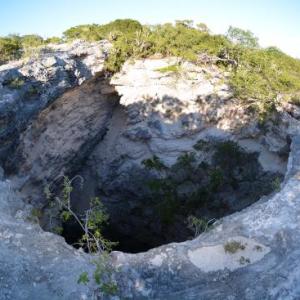
The islands of Turks and Caicos have limestone foundations, so sinkholes are not uncommon, but none are as impressive as one known simply as “The Hole.” On the island of Providenciales, this sinkhole was discovered by road builders when they almost drove their equipment into the massive cavern. The Hole is about 50 feet across and 60 feet down to the water in the bottom.
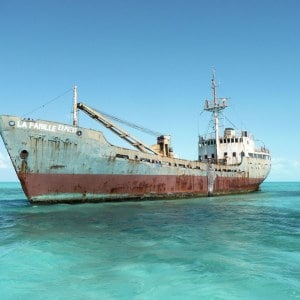
In 2004, in the midst of Hurricane Frances, a privately-owned freighter broke loose from its mooring and drifted into the Caribbean Sea. La Famille Express rests on a reef in a few feet of water, abandoned and desolate. It was built in 1952 by the Russian Navy as a cargo ship, the Fort Shevchenko. It was sold to an islander in the mid-1990s, but not before witnessing the Cuban Missile Crisis first-hand in 1962.
Accommodation:
Hotel or Hostel (single): $72
Double-occupancy room: $144
Food
Meals for one day: $27
Transportation
Taxis, local buses, train: $8.25
Intercity: $18
Entertainment
Entrance tickets & shows: $35
Tour of The Conch Farm: $10
1-hr Horseback ride: $70
1/2-day Snorkel trip: $110
Alcohol
Drinks for one day: $4.91
Accommodation
Hotel or rental home (single): $164
Double-occupancy room: $328
Food
Meals for one day: $63
Transportation
Taxis or Car rental: $19
Intercity: $46
Entertainment
Entrance tickets & shows: $84
Tour of The Conch Farm: $10
1-hr Horseback ride: $70
1/2-day Snorkel trip: $110
Alcohol
Drinks for one day: $11
Accommodation
Resort or hotel (single): $315
Double-occupancy room: $630
Food
Meals for one day: $128
Transportation
Car Rentals or private driver: $41
Intercity: $110
Entertainment
Entrance tickets & shows: $188
Tour of The Conch Farm: $10
1-hr Horseback ride: $70
1/2-day Snorkel trip: $110
Alcohol
Drinks for one day: $23
When planning for your trip to Turks & Caicos, don’t forget about travel insurance! You never know what might happen and it’s better to be safe than sorry.

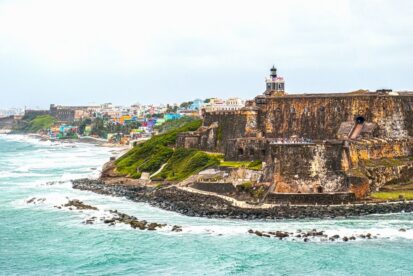


Interested in traveling the world while getting paid? Here at Diversifying Globetrotters LLC, we are partnered with Melanin On The Map and Travel Coach Network to help people across the world find financial, personal, and time freedom. Join the hundreds of others making the change to better themselves while exploring the world and adding money to their pockets.